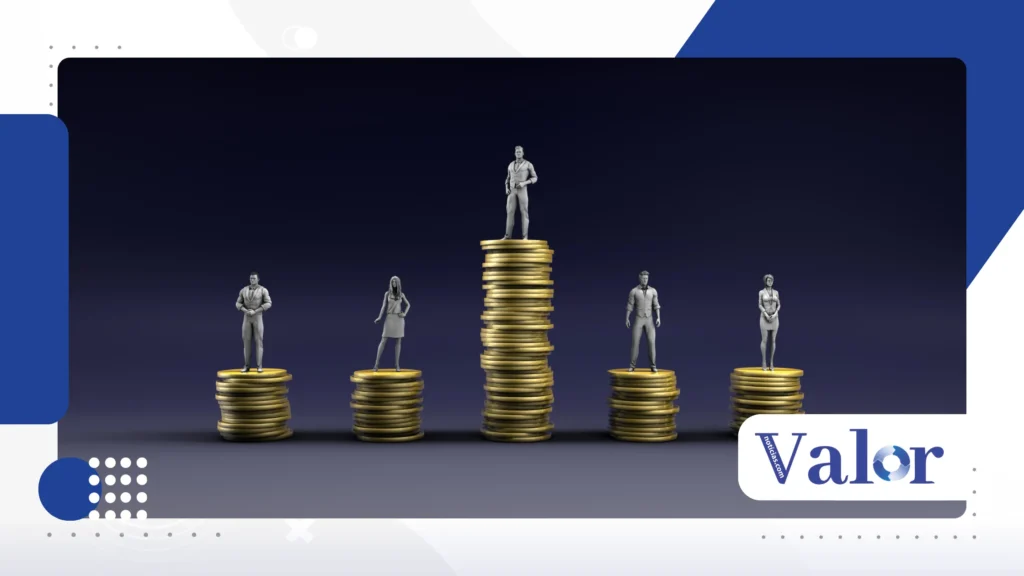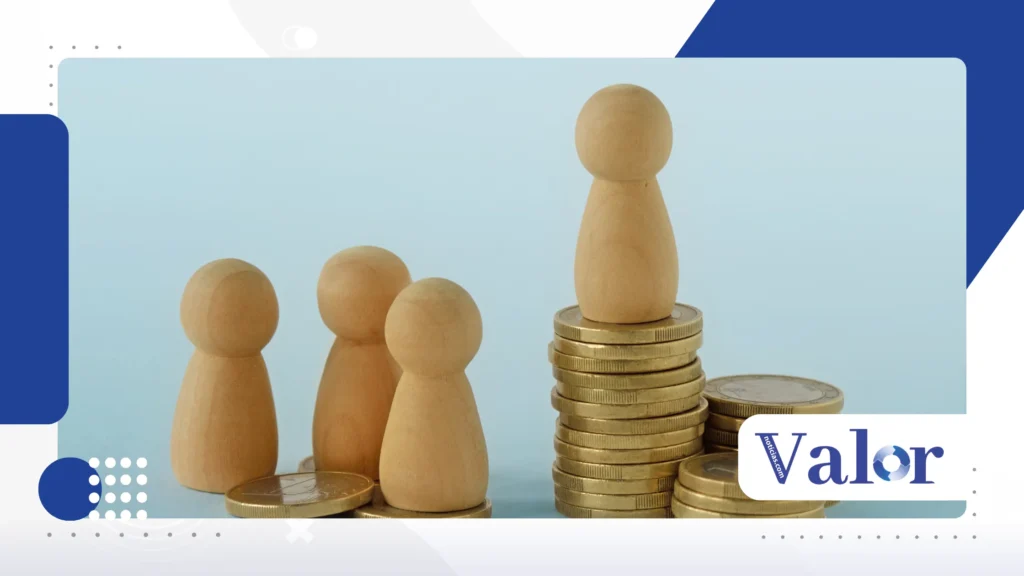What is economic inequality and how is it measured?

THE economic inequality is a complex and central issue for contemporary society, and you have certainly heard about the division between “rich” and “poor”, about the concentration of income in a few hands, or about the difficulty many have in accessing basic services.
Advertisements
But what exactly does this concept mean and, more importantly, how can we quantify it accurately and responsibly?
This article delves deeper into this issue, exploring the various facets of inequality, the main measurement tools, and their implications for our daily lives.
You'll discover that it's not just about money, but about access to opportunities, social justice, and a more balanced future for all.
We'll look at the most commonly used metrics, such as the Gini coefficient and the Palma index, and show how they help us understand the distribution of wealth across countries.
Inequality Goes Beyond the Numbers
When we think about economic inequality, the first image that comes to mind is that of income and wealth disparity. However, it's crucial to understand that this is just the tip of the iceberg.
The true extent of inequality is manifested in how it affects people's opportunities and quality of life.
Imagine two children born in the same city, in the same year. One of them grows up in a wealthy family, attends an excellent private school, has access to language classes and exchange programs, and has a network of contacts that propel her career.
The other, in turn, lives in a neighborhood with little infrastructure, attends a run-down public school, and has had to work from an early age to help with the family income.
Although both have the same potential, their trajectories and the opportunities available are drastically different.
This is the cruelest face of inequality: the inheritance of disadvantages that perpetuates cycles of poverty and limits human development.
The lack of access to quality education, healthcare, and even cultural goods is a direct reflection of this disparity.
This complexity of economic inequality is what makes it so difficult to combat.
It's not enough to redistribute money; we need to create a system that promotes equitable access to opportunities.
Income disparity, for example, is an important indicator, but it does not capture the entire problem.
Wealth, which includes assets, property, and investments, can be even more concentrated.
For example, the “World Inequality Report 2022” research indicates that the richest 10% in the world hold 76% of global wealth, while the poorest half owns only 2%.
This extreme concentration of wealth not only creates barriers to social mobility, but can also distort politics and economics in favor of a select few.
+ Platform Economy: How Uber, iFood, and Others Affect Informal GDP
Measuring the Invisible: Tools and Indicators

The measurement of economic inequality It is a challenging but essential task for governments and organizations to develop effective policies.
To this end, several metrics have been created to more accurately quantify income and wealth distribution. Below, we explore two of the most important.
The Gini Coefficient
The Gini Coefficient is perhaps the most famous metric for measuring economic inequality.
Developed by Italian statistician Corrado Gini in the early 20th century, it is a number between 0 and 1.
A value of 0 represents perfect equality, where everyone has the same income. A value of 1 represents maximum inequality, where a single person holds all the income.
Countries with a Gini closer to 0, such as the Nordic countries, are considered more egalitarian, while those with a Gini closer to 1, such as some in Latin America and sub-Saharan Africa, face greater challenges.
The Gini is a useful tool for comparisons between countries and over time, but it has its limitations.
It doesn't tell us, for example, where inequality is most concentrated—whether at the top of the pyramid, at the base, or in the middle.
+ What are Incentivized Debentures and Why Are They Getting Attention?
The Palm Index
A more recent alternative to the Gini is the Palm Index. It focuses on a crucial issue: the disparity between the richest and the poorest.
The Palma Index is the ratio of the share of income held by the richest 10% to the share of income held by the poorest 40%.
If the value is 1, it means that the income of the richest 10% is the same as that of the poorest 40%. Values greater than 1 indicate that inequality is more pronounced at the top of the income distribution.
The Palma Index was proposed by José Gabriel Palma and is particularly useful because it focuses on the dynamic that most concerns economists and society: the growing concentration of income at the top.
While the Gini can be misleading (two countries with the same Gini can have very different income distributions), Palma offers a more direct and intuitive view of the disparity.
To illustrate the difference between the two metrics, let's consider a simple example: a group of 10 people and each person's annual income, in thousand reais.
| Person | Annual Income (in thousands) |
| P1 | 10 |
| P2 | 12 |
| P3 | 15 |
| P4 | 20 |
| P5 | 25 |
| P6 | 30 |
| P7 | 35 |
| P8 | 40 |
| P9 | 50 |
| P10 | 263 |
In this hypothetical scenario, total income is R$500,000. The Gini coefficient would be high, reflecting the high concentration of income in the P10.
THE Palm Index would be even more revealing: the income of the richest 10% (P10) is 263 thousand, while that of the poorest 40% (P1 to P4) is 57 thousand.
The ratio is approximately 4.6, indicating that the richest person has an income 4.6 times greater than that of the poorest 40%, an extreme disparity that the Gini alone would not demonstrate so clearly.
To deepen your understanding of the global impact of inequality, it is worth consulting the website of World Inequality Lab (World Inequality Lab).
There you will find detailed data and reports that show how the economic inequality manifests itself in different regions of the world, revealing the urgency of coordinated global action.
Inequality is not a distant problem
THE economic inequality It is not just an abstract concept of economists or a problem of distant countries.
It has a profound and tangible impact on our daily lives. After all, economic inequality is a topic present in the news, in discussions about public policies and in election campaigns.
The way inequality manifests itself in your life may be subtle, but it is persistent.
It is evident in the difficulty of renting or buying a home in large urban centers, the quality of public transportation, and the disparity in access to health services.
A society with high levels of inequality tends to be less cohesive, more unstable, and have a higher incidence of social problems, such as crime and mental health problems.
Inequality is like an invisible wall that separates people and limits a nation's potential. Imagine a race where the competitors don't start from the same starting point.
Some are already in the final stretch, with the wind at their back, while others are stuck in obstacles and still need to overcome steep hills.
The race, no matter how hard the fastest try, is already decided before it even begins.
The lack of equal opportunities undermines meritocracy and the belief that hard work and talent are enough for success.
+ What is the Consumer Confidence Index and how is it calculated?
Conclusion
Understand the economic inequality It is not just an intellectual curiosity, but a necessity for anyone who cares about the well-being of the society in which they live.
It's not just numbers in tables, but manifests itself in people's real lives, limiting opportunities and perpetuating cycles of deprivation.
Measuring this inequality with tools such as the Gini Coefficient and the Palma Index is the first step toward developing effective public policies.
The fight for a more just and equitable future requires that we view inequality not as an inevitable problem, but as a challenge that can be overcome with fairer social and economic policies.
Building a society where everyone has a chance to thrive is not a utopia, but an achievable goal that benefits everyone, regardless of their background.
Frequently Asked Questions
Is inequality inevitable?
Not necessarily. While some income disparity can exist in any market economy, extreme inequality is not a natural byproduct, but rather the result of policies, tax structures, and systems that perpetuate the concentration of income and wealth.
Has globalization increased inequality?
Globalization is a complex phenomenon. On the one hand, it has lifted millions out of poverty in developing countries. On the other, in developed countries, it has contributed to wage stagnation for low- and middle-income workers, while the richest have benefited enormously.
How does inequality affect economic growth?
Extreme inequality can be detrimental to growth. It reduces aggregate demand, as the majority of the population has little money to consume, and can lead to financial crises. Furthermore, the lack of access to quality education and healthcare for a large portion of the population reduces the country's productivity and innovation potential as a whole.
What can we do to reduce inequality?
Effective actions include progressive tax policies (where the wealthiest pay a higher tax rate), investments in high-quality public education and healthcare, protecting labor rights, and regulating the financial system. These are systemic changes that require political will and civic engagement.
